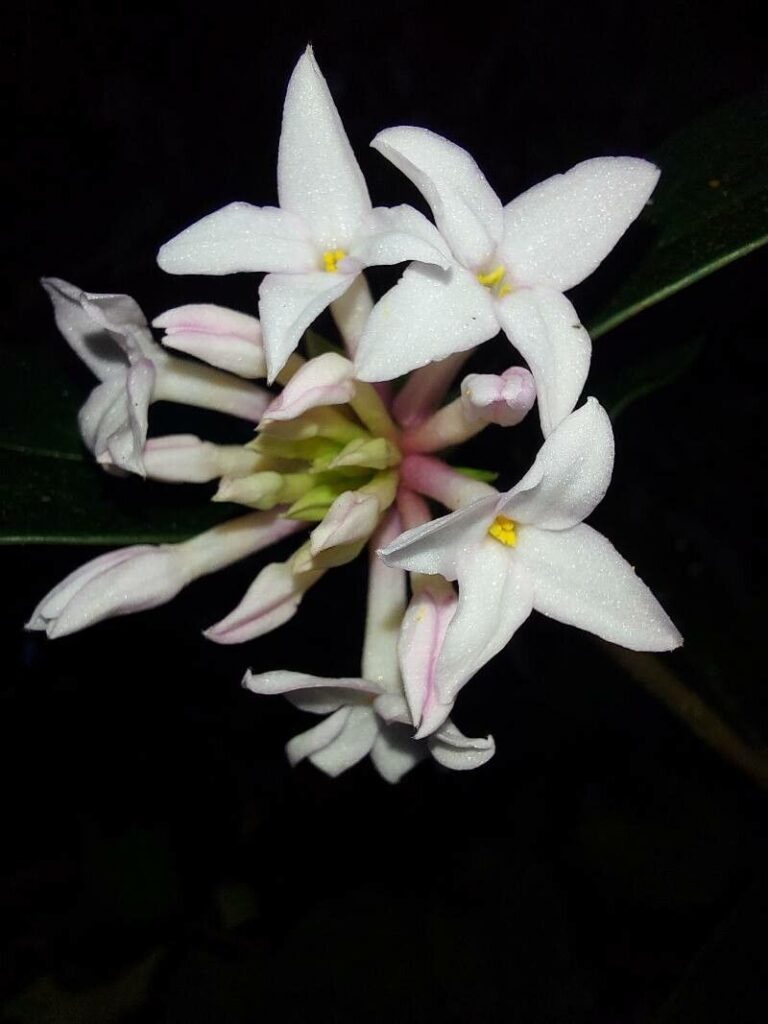Unleashing the Sweetness: Propagating Daphne Odora ‘Aureomarginata’
Daphne odora ‘Aureomarginata’, also known as the ‘Gold-Margined Winter Daphne’, is a real showstopper! This evergreen shrub bursts with intensely fragrant, delicate flowers in the depths of winter, adding a touch of sunshine to even the gloomiest days. But the real beauty lies in its gorgeous, variegated foliage: dark green leaves outlined in a bright, golden hue, contrasting beautifully against the white, pink, or lilac blossoms.
Growing this captivating Daphne can be a challenge, but with some knowledge and patience, you can unlock the secret to successfully propagating this prized plant.
Two Routes to a New Daphne: Cuttings and Layering
The most popular method for propagating ‘Aureomarginata’ is through semi-hardwood cuttings. This technique involves taking cuttings from new growth that has just matured but isn’t fully woody yet.
Here’s how to do it:
- Timing is Key: The best time to take cuttings is in late spring or early summer when growth is active but not too tender. Choose healthy stems, free from pest or disease, with a pencil-thick diameter.
- Sharpen Your Tools: Employ sharp, clean pruning shears to make a 4-6 inch long cut just below a leaf node. Remove the lower leaves, leaving only the topmost two or three.
- Dip and Plant: Dip the cut end of the cutting in rooting hormone, ensuring even coverage, then plant it directly in a pot filled with a free-draining rooting mix. Make sure the pot has drainage holes and is placed in a bright, indirect light location.
- Maintain the Moisture: Water the cutting regularly, ensuring the rooting mix stays consistently moist but not soggy. Cover the pot with a clear plastic bag or humidity dome to maintain high humidity levels, crucial for successful root development.
- Patience Pays Off: It can take several months for roots to form, depending on the conditions. Keep the cuttings in a warm, bright spot and be patient. Once you start seeing new growth, you know your efforts have been successful!
Another method, albeit a slower process, is air layering. This technique encourages roots to grow around a stem while it’s still attached to the mother plant.
Here’s the process:
- Select a Branch: Choose a healthy branch on the Daphne odora ‘Aureomarginata’ about half an inch in diameter. Avoid any branches that have already flowered this season.
- Make a Ring: Carefully scratch off a strip of bark around the branch, exposing the green layer beneath. Use a sharp knife to prevent damaging the branch.
- Apply the Mixture: Apply a generous layer of rooting hormone to the exposed area. Then, wrap a moist sphagnum moss around the branch, securing it with plastic film or aluminum foil.
- Watch It Grow: Keep the moss moist at all times, and in a few months, the branch should start showing signs of root development.
- Detach and Plant: Once the roots are well established, you can carefully detach the branch from the mother plant and pot it up, allowing it to flourish as a new individual.
The Rewards of Patience
Propagating Daphne odora ‘Aureomarginata’ is a rewarding endeavor, offering the satisfaction of nurturing a new plant from scratch. The process demands patience and attention to detail, but the results are worth the effort, with the potential to enjoy the fragrant beauty of this wondrous shrub for years to come.
Remember, consistent care and a little bit of green thumb magic can unlock the secret to cultivating a thriving garden filled with the captivating scent and elegance of Daphne odora ‘Aureomarginata’. Happy propagating!
